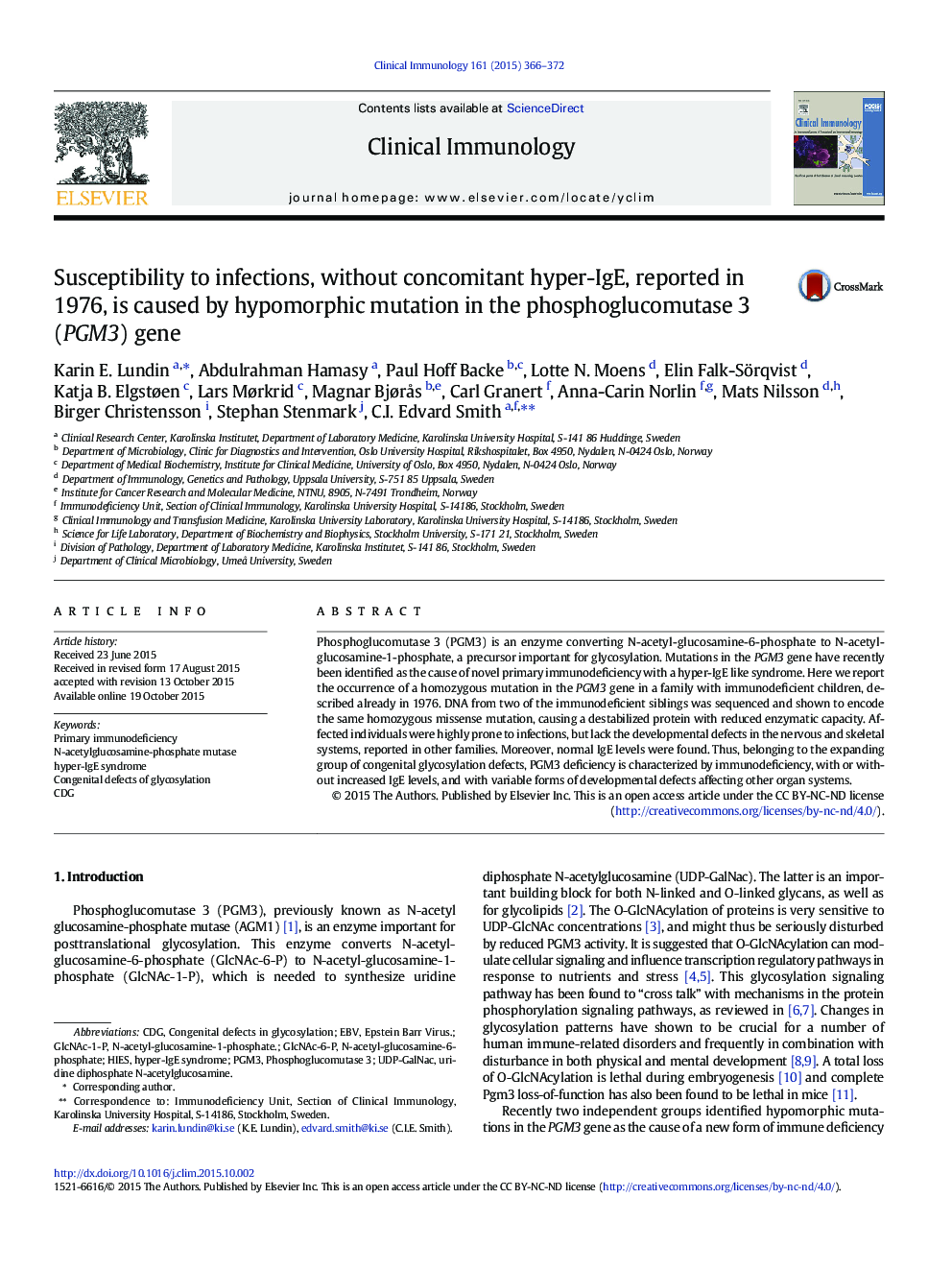| Article ID | Journal | Published Year | Pages | File Type |
|---|---|---|---|---|
| 6087155 | Clinical Immunology | 2015 | 7 Pages |
â¢Immunodeficiency reported in 1976, is now identified as caused by a mutation in PGM3.â¢Replacing Ile322 with Thr reduces protein stability and enzyme activity in PGM3.â¢Identified mutation in PGM3 induces primary immunodeficiency without hyper-IgE.â¢A PGM3-PID with increased eosinophils but without skeletal or neurological changes
ABSTRACTPhosphoglucomutase 3 (PGM3) is an enzyme converting N-acetyl-glucosamine-6-phosphate to N-acetyl-glucosamine-1-phosphate, a precursor important for glycosylation. Mutations in the PGM3 gene have recently been identified as the cause of novel primary immunodeficiency with a hyper-IgE like syndrome. Here we report the occurrence of a homozygous mutation in the PGM3 gene in a family with immunodeficient children, described already in 1976. DNA from two of the immunodeficient siblings was sequenced and shown to encode the same homozygous missense mutation, causing a destabilized protein with reduced enzymatic capacity. Affected individuals were highly prone to infections, but lack the developmental defects in the nervous and skeletal systems, reported in other families. Moreover, normal IgE levels were found. Thus, belonging to the expanding group of congenital glycosylation defects, PGM3 deficiency is characterized by immunodeficiency, with or without increased IgE levels, and with variable forms of developmental defects affecting other organ systems.
